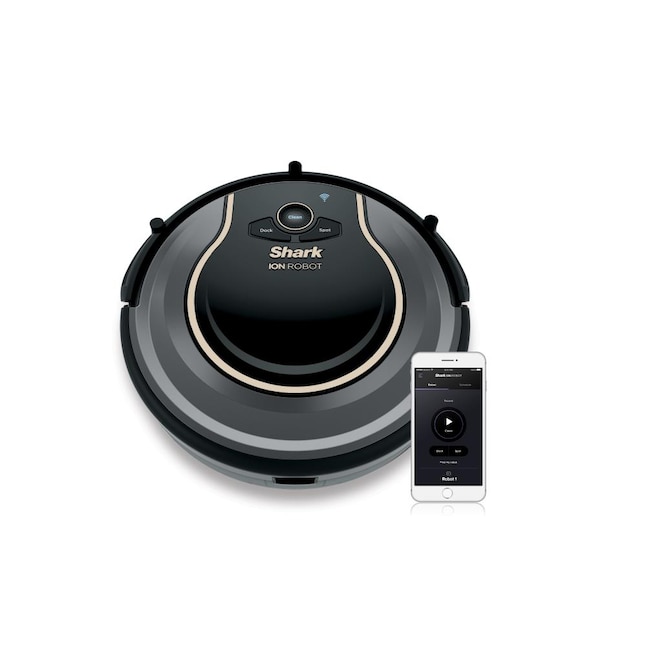Are you finding that your Shark ION robot vacuum is acting a little… cautious? Does it stop unexpectedly, refuse to move forward, or constantly think it’s about to tumble down the stairs when it’s perfectly safe? The culprit is often dirty cliff sensors. These small but mighty sensors prevent your robot from taking unwanted dives, but they need regular cleaning to function correctly. In this guide, we’ll show you how to easily clean the cliff sensors on your Shark ION, restoring its navigation and keeping it safely on solid ground.
Keeping your Shark ION’s cliff sensors clean is essential for optimal performance and prevents frustrating malfunctions. Regular cleaning ensures your robot vacuum efficiently cleans your floors, saving you time and effort. This guide provides simple, step-by-step instructions to maintain these crucial sensors, extend the lifespan of your Shark ION, and keep your floors spotless. Let’s get started!
Table of Contents
- Identifying the Cliff Sensors on Your Shark ION
- Gathering Your Cleaning Supplies
- Step-by-Step Guide to Cleaning Shark ION Cliff Sensors
- Troubleshooting: What If the Problem Persists?
- Pro Tips for Maintaining Your Shark ION’s Cliff Sensors
- FAQ About Cleaning Shark ION Cliff Sensors
- Tips, Warnings, and Best Practices
- Conclusion
Identifying the Cliff Sensors on Your Shark ION

The first step is locating the cliff sensors. On most Shark ION models, you’ll find these small, dark windows on the underside of the robot, typically near the edges. There are usually four to six sensors, evenly spaced around the perimeter. Refer to your specific Shark ION model’s manual for the exact location if you’re unsure.
Gathering Your Cleaning Supplies
Fortunately, you don’t need any fancy tools or harsh chemicals to clean the cliff sensors. Here’s what you’ll need:
- Soft, dry cloth: Microfiber cloths work best, as they won’t leave behind any lint or residue.
- Cotton swabs (optional): These can be helpful for reaching tight spaces.
- Can of compressed air (optional): This can help dislodge stubborn dust or debris.
Important: Never use water, cleaning solutions, or abrasive materials to clean the cliff sensors, as this could damage them.
Step-by-Step Guide to Cleaning Shark ION Cliff Sensors
Here’s the step-by-step guide on how to clean the cliff sensors on your Shark ION:
- Power off the robot: Before you begin any cleaning or maintenance, always turn off the Shark ION and disconnect it from the charging dock. This prevents accidental operation during the cleaning process.
- Flip the robot over: Carefully turn the Shark ION upside down to expose the underside where the cliff sensors are located. Make sure you have enough space to work comfortably.
- Wipe the sensors with a dry cloth: Gently wipe each cliff sensor with your soft, dry cloth. Use a circular motion to remove any dust, dirt, or debris that may be blocking the sensor.
- Use cotton swabs for tight spaces (optional): If there’s dirt or debris trapped in the corners or edges of the sensors, use a cotton swab to carefully dislodge it.
- Use compressed air (optional): If the cloth and cotton swabs aren’t enough, use short bursts of compressed air to blow away any remaining dust or debris. Hold the can a few inches away from the sensors and avoid prolonged spraying.
- Inspect the sensors: Once you’ve cleaned all the sensors, inspect them to make sure they’re clean and clear. If you still see any dirt or debris, repeat the cleaning process.
- Turn the robot back on: After you’re satisfied that the sensors are clean, flip the Shark ION back over and turn it on. Place it back on the floor and observe its behavior. It should now navigate without issues.
Troubleshooting: What If the Problem Persists?

Even after cleaning, your Shark ION might still exhibit erratic behavior. Here are a few things to consider:
- Check for Scratches or Damage: Examine the sensors closely for any visible scratches or damage. If you notice any damage, contact Shark customer support for assistance.
- Obstructions on the Floor: Ensure there are no small objects, cords, or rugs that could be interfering with the sensors.
- Software Glitches: In rare cases, a software glitch might be the cause. Try resetting your Shark ION by following the instructions in your user manual.
Pro Tips for Maintaining Your Shark ION’s Cliff Sensors

- Clean Regularly: Make it a habit to clean the cliff sensors every one to two weeks, depending on how often you use your Shark ION. Regular cleaning prevents buildup and ensures optimal performance.
- Monitor Pet Hair: Pet hair can easily get stuck on the sensors. If you have pets, clean the sensors more frequently.
- Avoid Wet Cleaning: Never use wet cloths or cleaning solutions to clean the sensors, as this can damage the delicate electronics.
FAQ About Cleaning Shark ION Cliff Sensors
Why is my Shark ION constantly stopping and turning around?
Dirty cliff sensors are a common cause. The robot thinks it’s about to fall, so it stops to prevent damage. Clean the sensors as described above.
Can I use alcohol to clean the cliff sensors?
No, avoid using alcohol or any other cleaning solutions. These can damage the sensors. Stick to a dry cloth or cotton swab.
How often should I clean the cliff sensors on my Shark ION?
It depends on your usage and environment, but a good rule of thumb is to clean them every 1-2 weeks. If you have pets or notice the robot acting strangely, clean them more often.
What happens if the cliff sensors are damaged?
If the cliff sensors are damaged, your Shark ION may not be able to navigate properly and could potentially fall down stairs. Contact Shark customer support for repair options.
Do all Shark ION models have the same cliff sensor locations?
While most models have them on the underside near the edges, it’s best to consult your specific model’s user manual for the exact location.
Can I use a vacuum cleaner to clean the cliff sensors?
It’s generally not recommended to use a vacuum cleaner, as it can create static electricity or damage the sensors with excessive suction. A dry cloth or compressed air is a safer option.
Tips, Warnings, and Best Practices
- Safety First: Always power off the robot before cleaning.
- Gentle Cleaning: Avoid applying too much pressure when cleaning the sensors.
- Read the Manual: Consult your Shark ION’s user manual for specific cleaning instructions and warnings.
- Regular Maintenance: In addition to cleaning the cliff sensors, regularly clean the brushes, dustbin, and filter to keep your Shark ION running smoothly.
Conclusion
Cleaning the cliff sensors on your Shark ION robot vacuum is a simple but essential maintenance task. By following the steps outlined in this guide, you can ensure your robot navigates effectively and avoids unwanted falls. Regular cleaning will extend the lifespan of your Shark ION and keep your floors sparkling clean. So, grab a soft cloth and get cleaning – your Shark ION will thank you!







